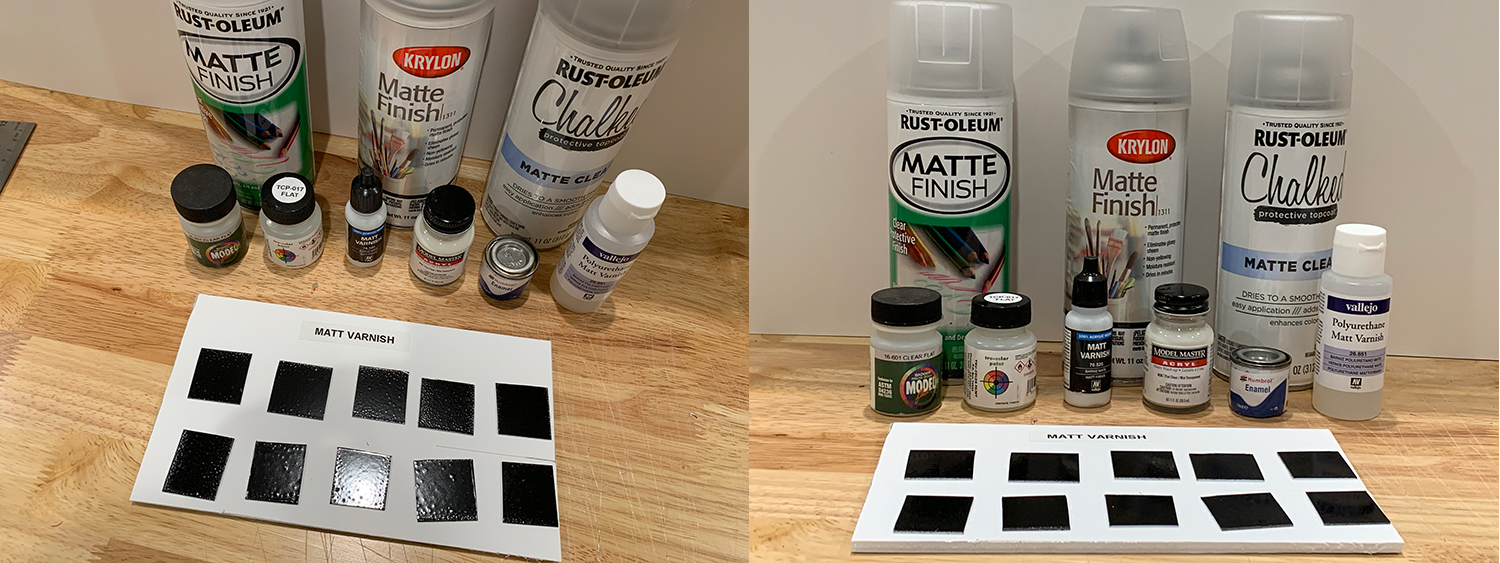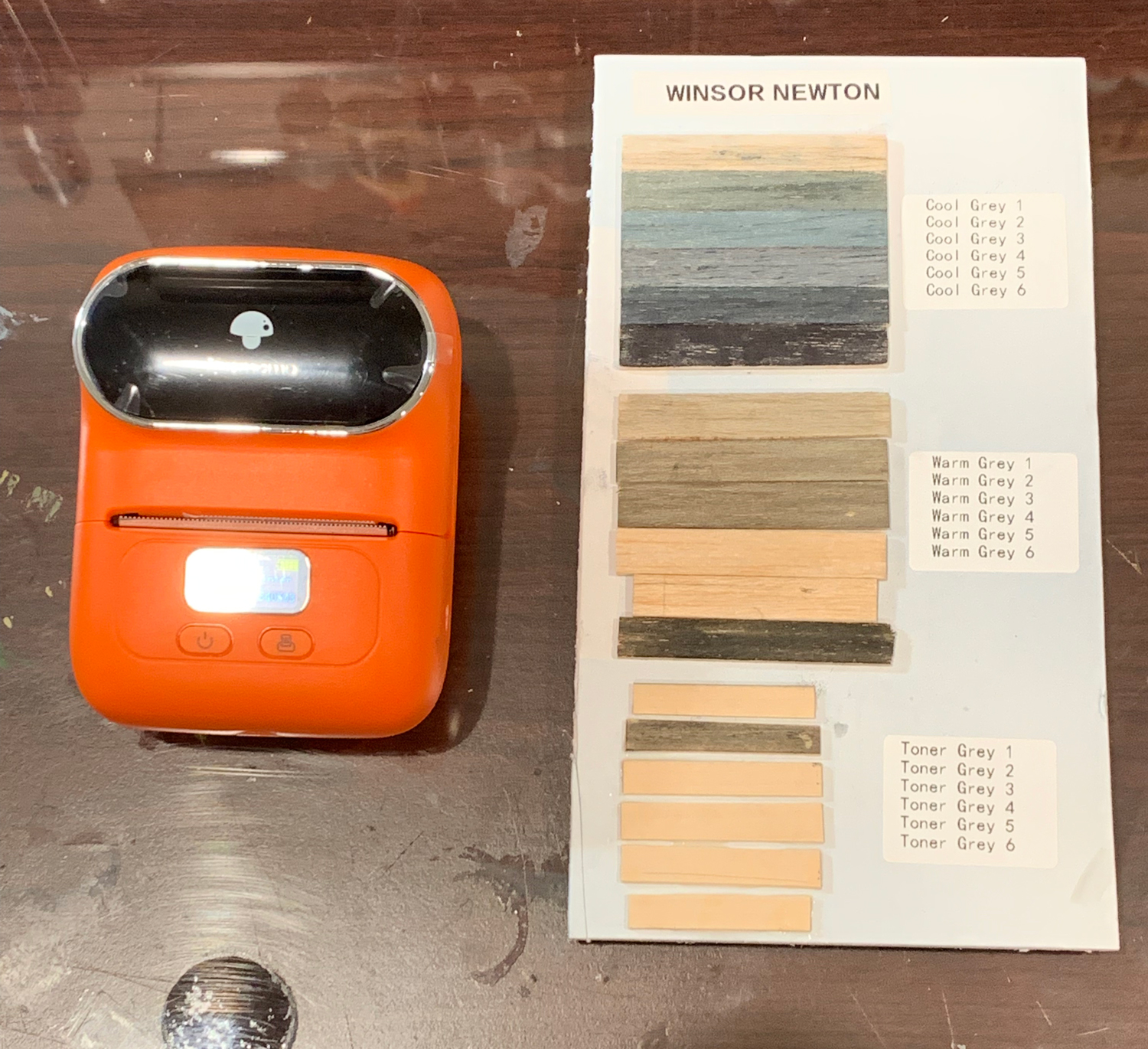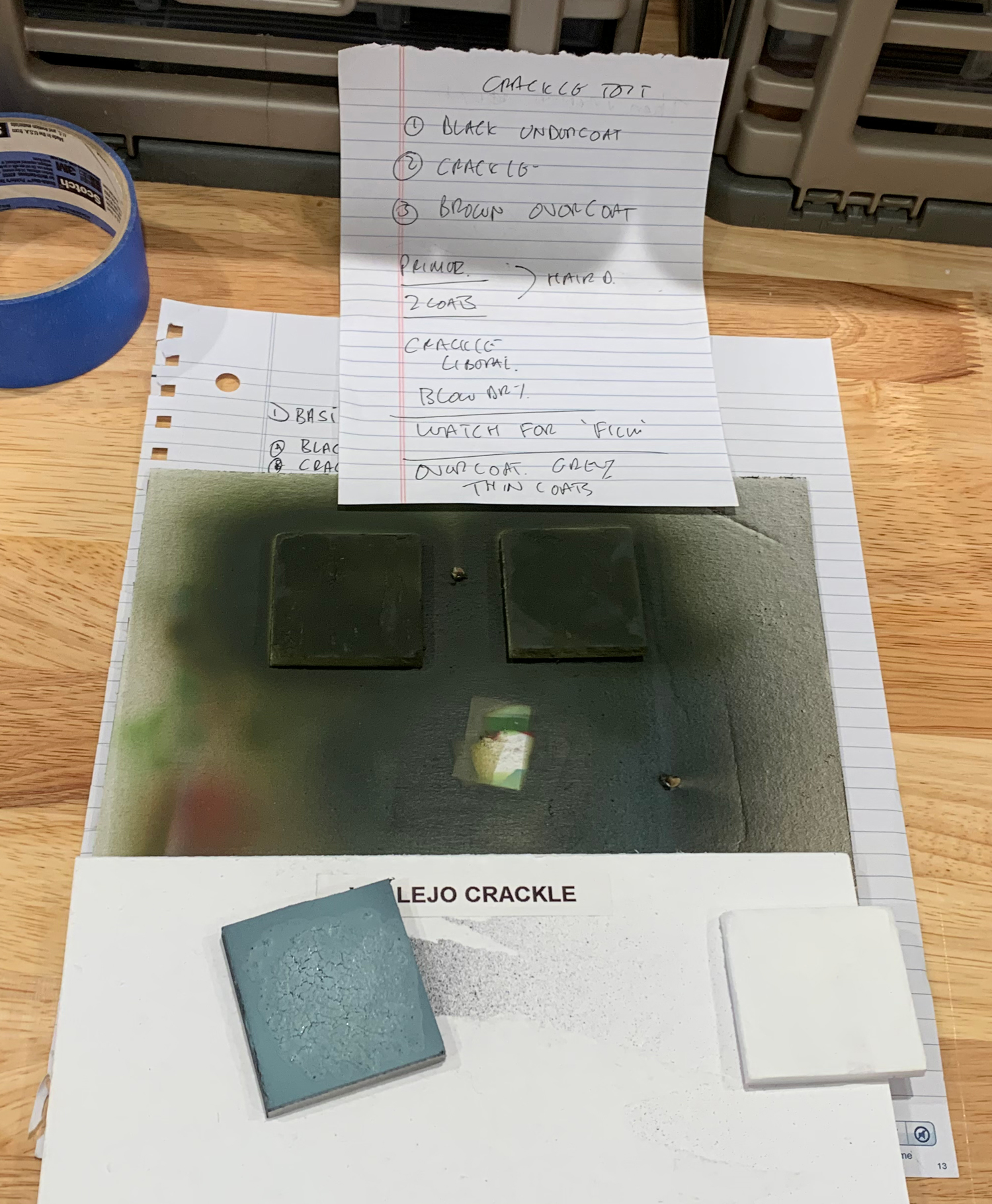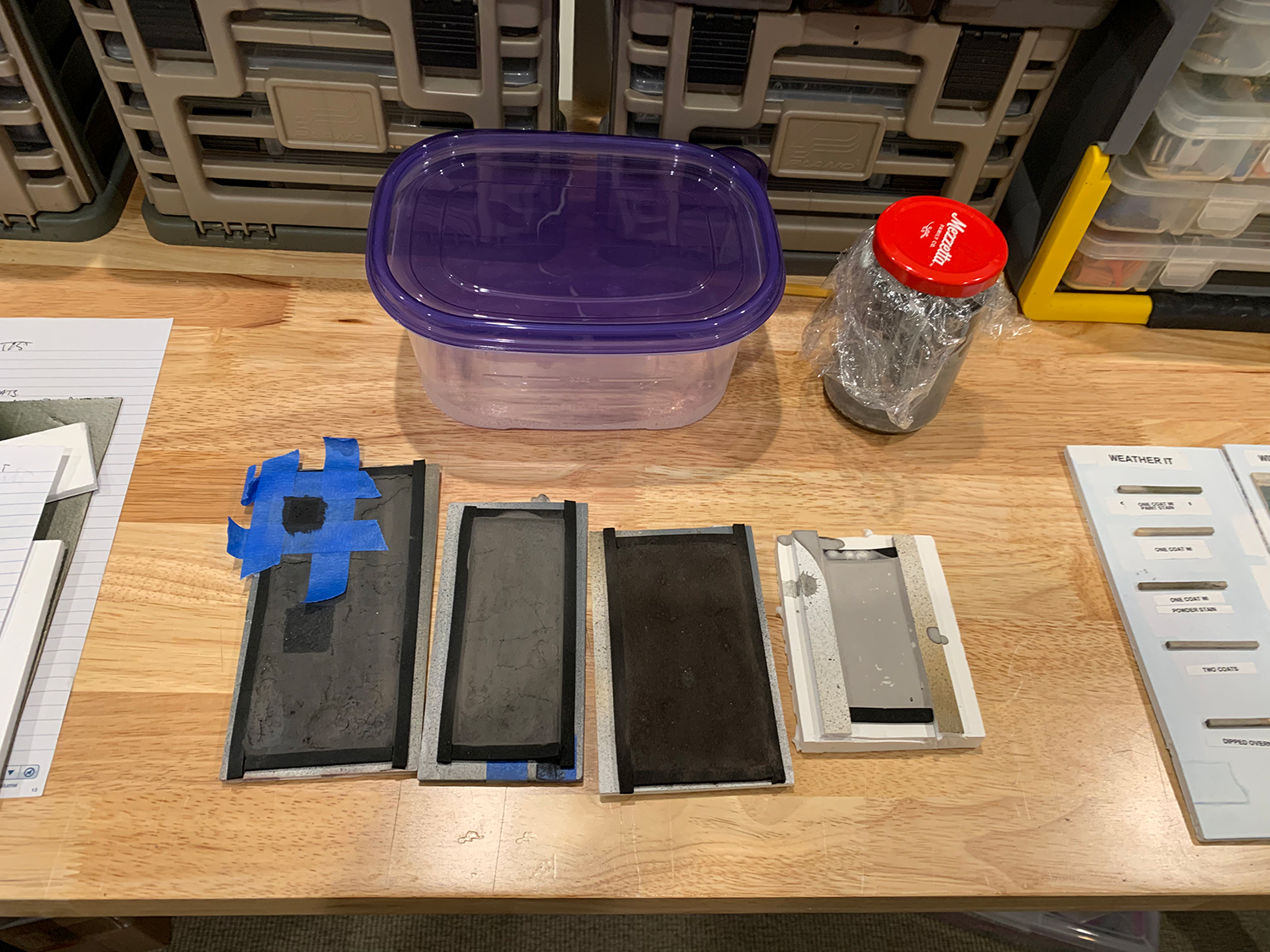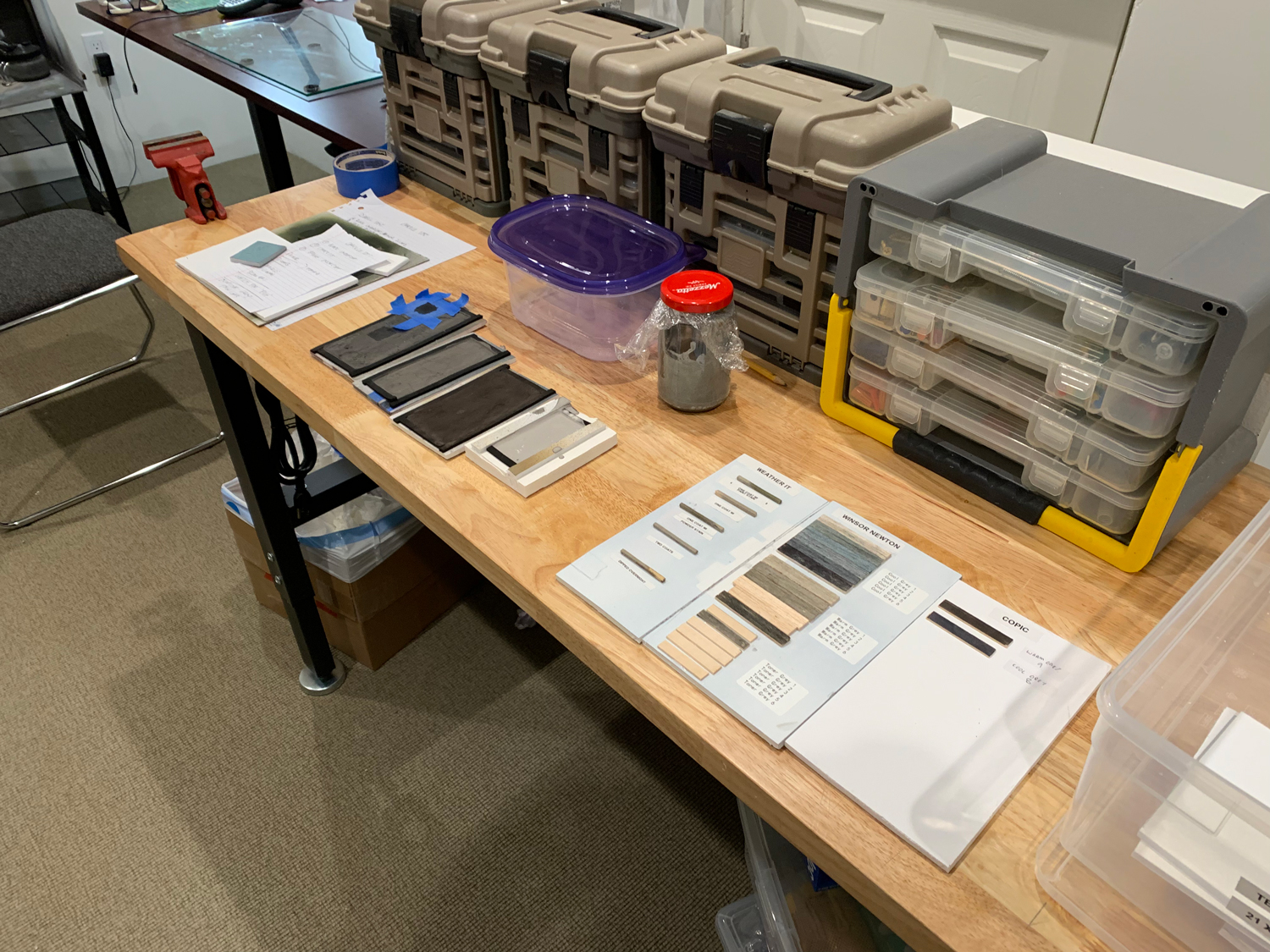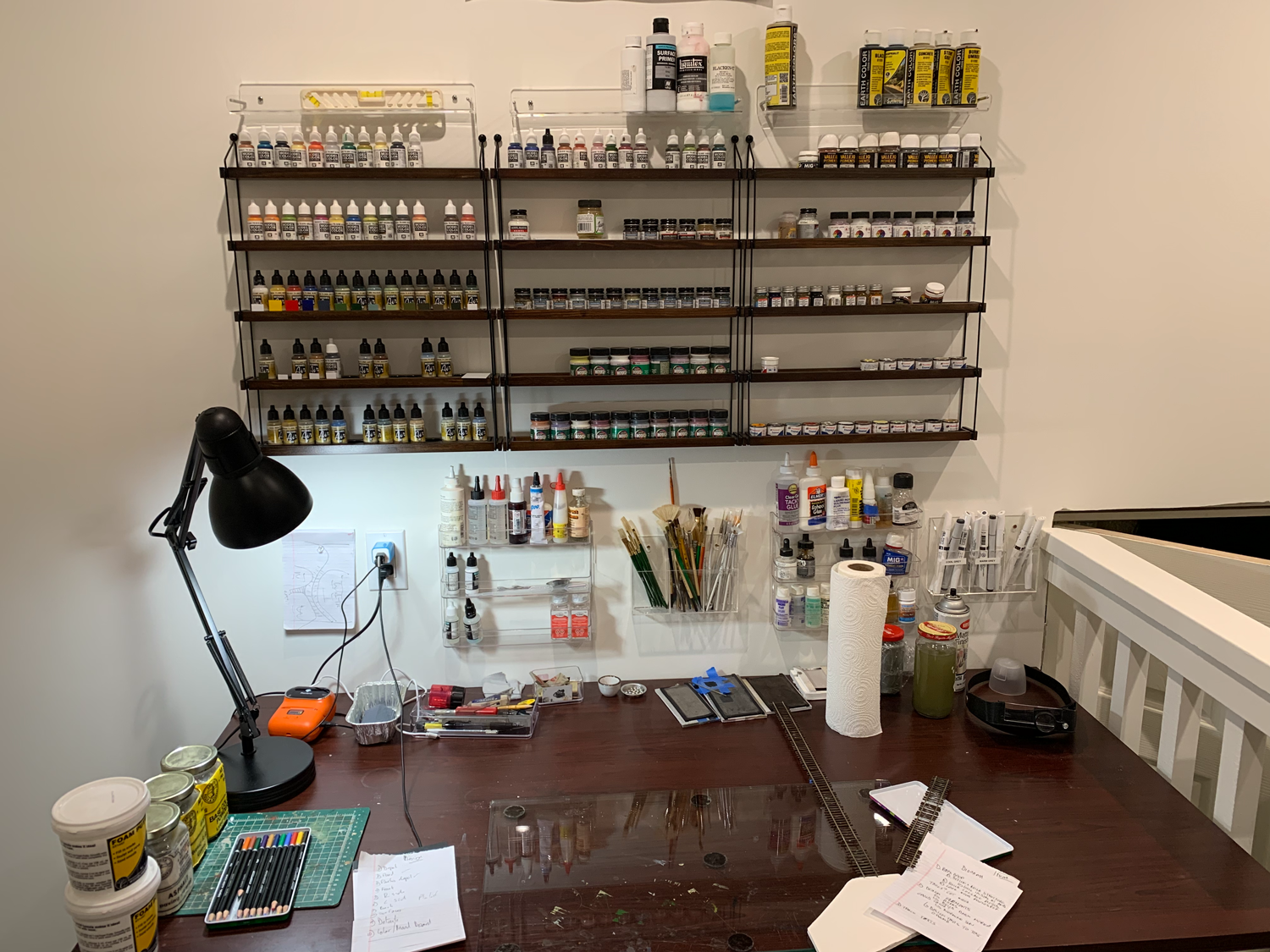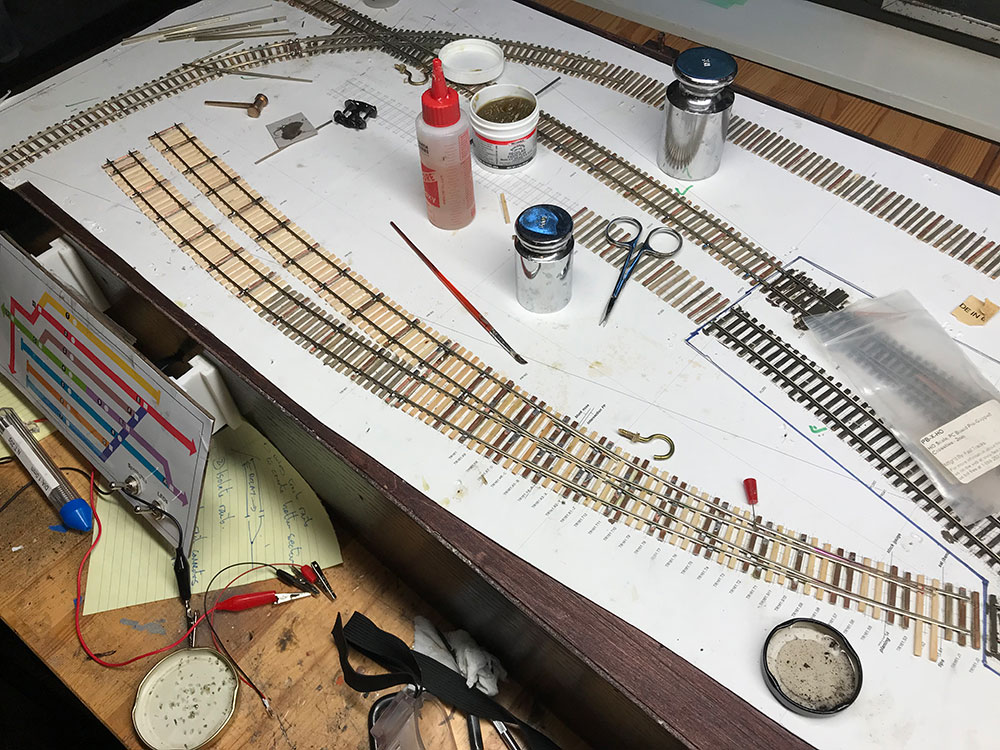I have a testing schedule which I will work through over the next weeks:
- Road surfaces – working on this now – see below.
- Matt varnish – I’m looking for the perfect matte varnish – one with no sheen! working on this now – see below.
- Trackbeds – I’m going build some more railroad trackbeds to test different grassing and track weathering ideas.
- Ammo oil brusher – New product test. I’ve been watching military modeler videos on weathering and they recommended this product.
- Grass static applicator – I need to get better at using my static grass applicator. I’ve seen so many fantastic example of grass on model railroads and want to try to do better job myself.
Old tests either completed or nearly completed:
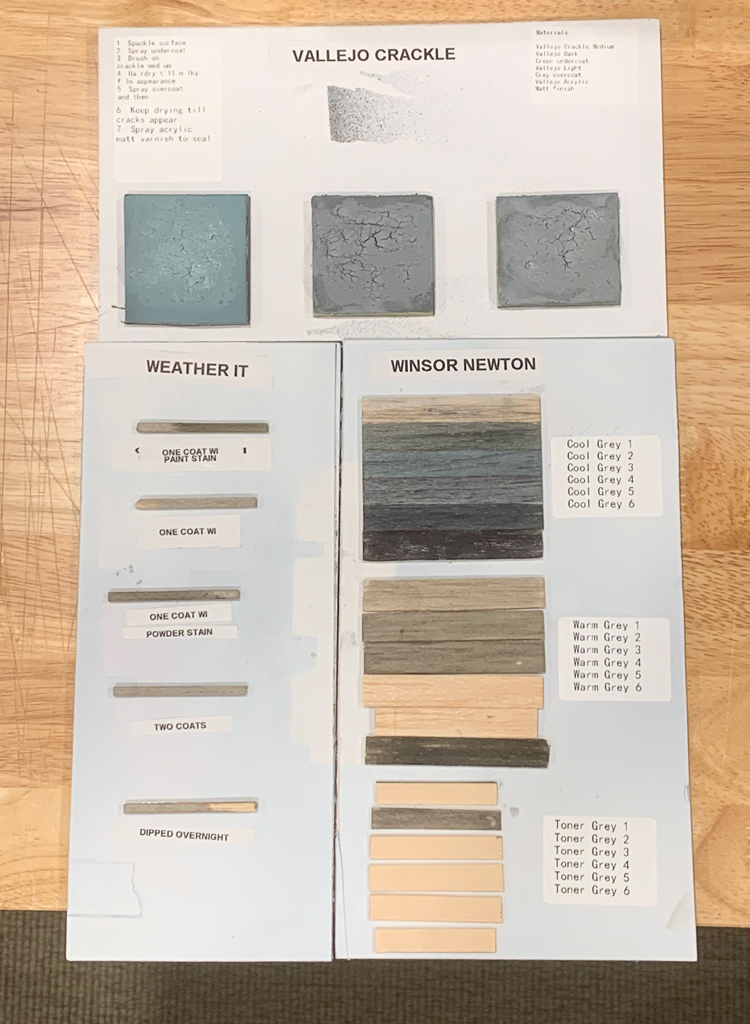
New tests currently been conducted:
Asphalt road surfaces
Yes I have begun. I am glad I waited a couple of weeks as it gave me time to think things through. The test is the first step to creating a roadway surface for the model. As I want to build, color and weather the roadway on my desktop and then move the final result to the diorama I wanted to split the test into two parts.
- A test bed into which I can slip different road surfaces to give me an idea of how things are looking. This will have a grassy side to replicate the grassy side of the diorama (and generally a road in country).
- A reusable road-surface jig into which I can pour the road surface mixture. I want to create lots of variations of road surface and this jig will allow me to create one after the other.
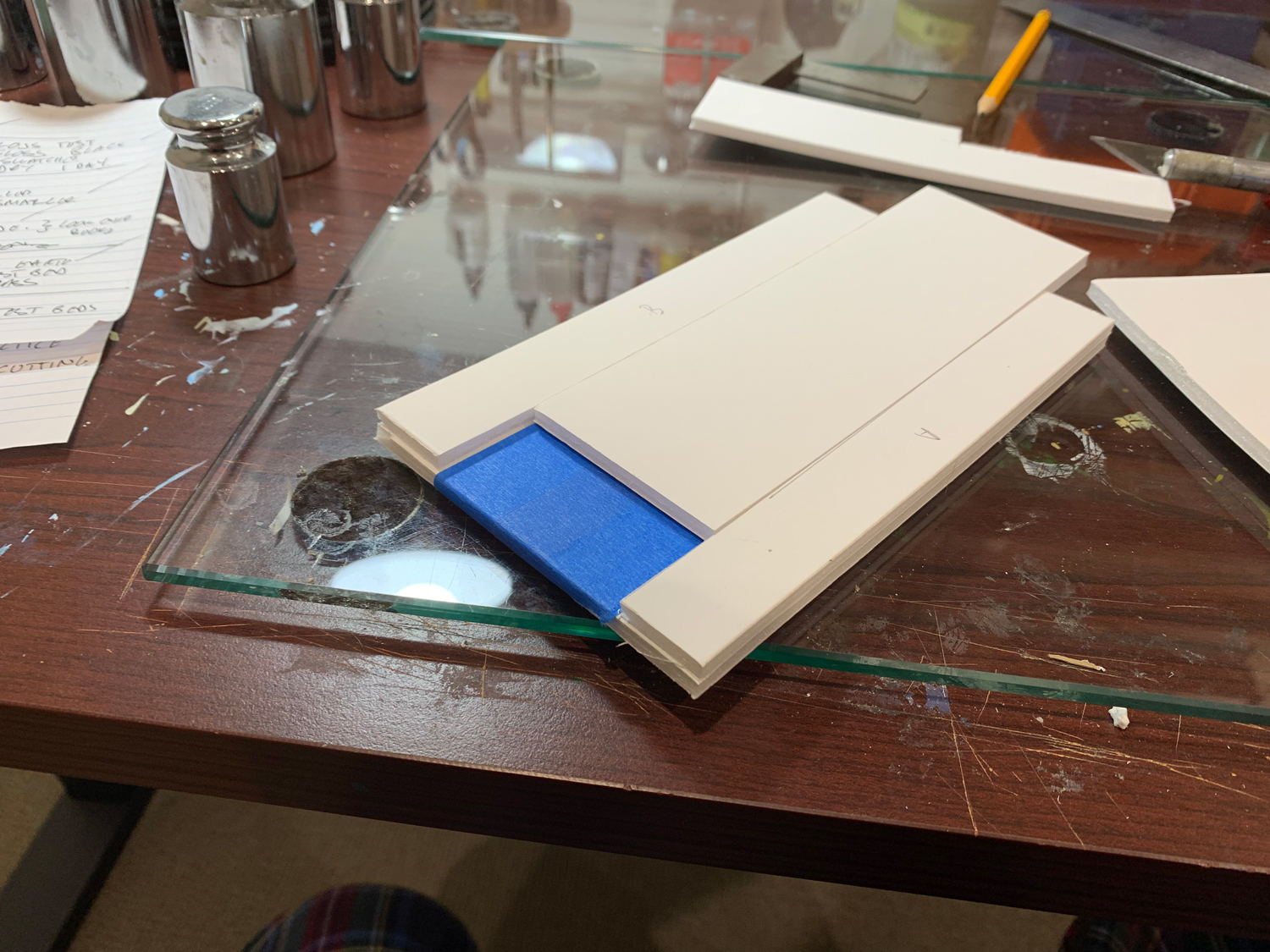
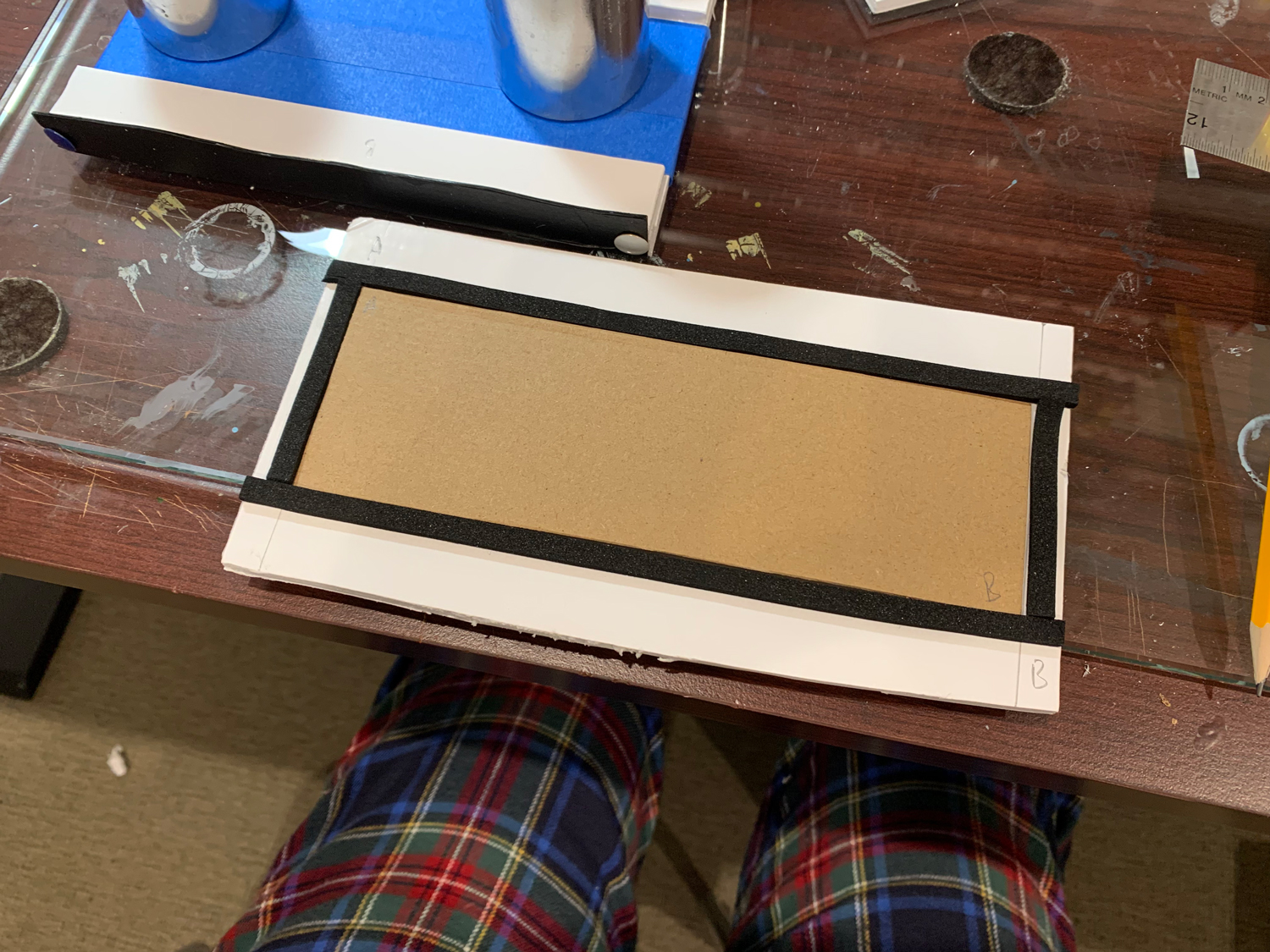
I’ll post the step-by-step methods of the test when finished.
Matte Varnish
I’ve been very disappointed with the various matte varnishes on offer and wanted to spend some time trying out various products until I strike gold and find a matte varnish that does not have any sheen. I find that in photographs of models, most that have been given a coat of matte varnish have a slight unrealistic glow. That’s what I want to avoid. I’ll be working on this test this week.
